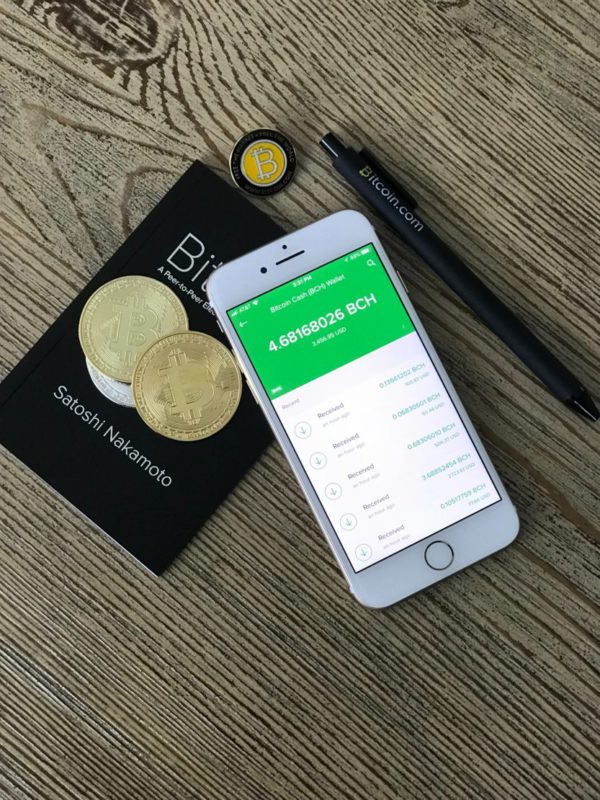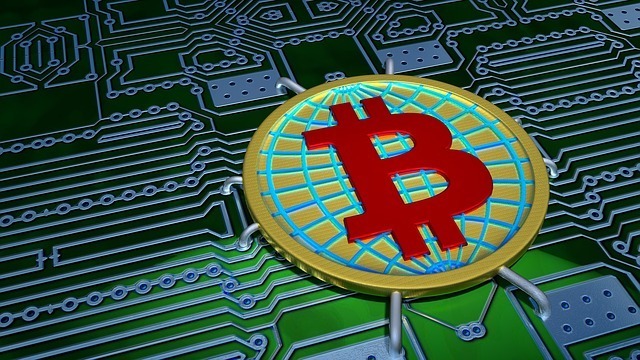All About Bitcoin Taproot Upgrade And Bitcoin Defi Blockchain
The Bitcoin Taproot upgrade made it possible to create DApps on the Bitcoin blockchain. This improved the long-term viability of the blockchain by speeding up the DeFi movement on the Bitcoin network. Since 2020, decentralised finance (DeFi) has had a lot of success, and almost all of that growth has come from Ethereum. Ethereum created new financial services and tools, such as decentralised exchanges (DEXs), automated loan platforms, and tokens that can’t be used to buy or sell anything (NFTs).
However, on the Bitcoin blockchain, it was impossible to make smart contract-powered decentralised applications (DApps) until the Taproot upgrade. This opened the door to DeFi the world’s first cryptocurrency. In this case, Bitcoin DeFi means making new decentralised apps for Bitcoin’s network, which wasn’t possible before because of the problem with scaling transactions.
Before the Taproot upgrade, Bitcoin transactions were fairly slow because each digital signature had to be checked against a public key. Because of Taproot, the network can now validate a group of digital signatures at once. Because of this, each block needs less space, so the Bitcoin blockchain can support the development of DeFi apps.
#Ordinals Protocol utilizes Bitcoin’s Taproot upgrade, an improvement to secure the network and more efficiently facilitate transactions. It stores NFTs through inscriptions, a method of “inscribing” data in satoshis or sats,which represent one hundred millionth of one bitcoin👇 pic.twitter.com/0qbuEqBtCV
— GA DAO🍥 (@GNAirdrops) February 11, 2023
How does Bitcoin DeFi work after Bitcoin Taproot upgrade?
DeFi is possible on Bitcoin with wrapped tokens like Wrapped Bitcoin, layer-1 blockchains like Stacks, and sidechains like Rootstock. Bitcoin’s scripting language, which is called Script, is not Turing complete. This means that it lacks some logical operations, such as loops, that computers need to do. So, even with the Taproot upgrade, the Bitcoin network only has limited programmability. This means that Bitcoin DeFi platforms have to use layer-2 scaling solutions and sidechains to host their smart contracts.
Wrapped tokens like Wrapped Bitcoin (wBTC), layer-1 blockchains like Stacks, and sidechains like Rootstock make DeFi on Bitcoin possible. For example, wBTC, an Ethereum token that was released in January 2019, is backed one-to-one by Bitcoin (BTC), which means that 1 wBTC is always equal to 1 BTC. With wBTC, users can interact with a number of Ethereum’s DApps.
A layer-1 blockchain called Stacks makes hundreds of billions of dollars in BTC capital available, giving people who own Bitcoin new ways to use it and make money from it. It uses a proof-of-transfer consensus mechanism that uses Bitcoin’s proof-of-work blockchain to protect its own blockchain.
DeFi products like the Stackswap DEX use the Stacks blockchain to let users trade and mint NFTs, borrow algorithmic stablecoins, and launch and trade tokens on the Bitcoin network. Also, since Stacks and Bitcoin are linked, NFTs made on Stacks settle on the Bitcoin blockchain and are protected by it.
Rootstock, which runs in parallel to the blockchain, makes it possible for smart contracts to be made on the Bitcoin blockchain. When BTC is sent to Rootstock, it changes into RBTC, which is a Bitcoin that can be used in smart contracts. This protocol acts as a bridge between the two chains because it allows communication in both directions. Sovryn, one of the first financial apps that didn’t need permission to work, uses RSK’s technology to connect to the Lightning Network, Ethereum, Bitcoin, and the BNB Smart Chain.
Also, read – The Binance Blockchain Bridge has been upgraded to connect DeFi and CeFi.
What DeFi projects are part of the Bitcoin ecosystem?
In addition to wBTC, Stacks, and Rootstock, BadgerDAO, RenVM, and Liquid Network also promote different ways that Bitcoin DeFi can be used.
BadgerDAO
BadgerDAO is a decentralised autonomous organisation (DAO) that allows BTC to be used as collateral in different DApps. The BadgerDAO uses the BADGER token based on Ethereum to run the protocol and give out rewards.
With Sett Vaults, Badger’s first product, users can make money off of their fake BTC assets. Users can lock up their tokenized Bitcoin in SETTs, which are pools of tokens, and let smart contracts manage their holdings to get a return in the form of bTokens.
Badger’s second product, Digg, is software that controls the DIGG token, a flexible-supply cryptocurrency whose price is tied to the price of BTC in US dollars. Like any other token, DIGG can be put into SETTs to make its owners money and can be used in DeFi protocols.
RenVM
The protocol for decentralised Ethereum Ren makes tokens that track the value of assets outside of Ethereum, like Bitcoin, and provides liquidity to projects on multiple blockchains. So, people who own Bitcoin can use Ren (which is needed to pay nodes) to use Ethereum’s DeFi products without selling their BTC or moving their assets to a different blockchain.
The Ren virtual machine stores the original funds, accepts tokens from one blockchain, and makes new tokens on another through RenBridge to exchange assets between blockchains. For example, a user could send BTC to the RenVM, which would then issue renBTC, a new token on Ethereum that reflects the original Bitcoin. This means that if the user wants to get their Bitcoin back, the transaction can be undone.
Liquid Network
The Liquid Network is a layer-2 Bitcoin solution and an inter-exchange settlement network that lets digital assets like security tokens, stablecoins, and other financial instruments be issued quickly and privately on top of the Bitcoin blockchain.
The native token on the Liquid sidechain is LBTC, which is just Bitcoin wrapped differently. Users send BTC to a Lightning Network address on the Bitcoin network to use the Liquid Network. This is called “peg-in.” On the Liquid Network, the same amount of LBTC is created and sent to the user’s address after the transaction has been confirmed 102 times.
Peg-out can also be used to withdraw BTC by sending LBTC to an unrecoverable address to be burned. A Lightning Network member can send the original BTC to a user’s Bitcoin network address when two confirmations are received.
Where will Bitcoin DeFi go from here?
How well Bitcoin DeFi platforms and protocols work will depend on how long-lasting and safe they are, how innovative they are, and what incentives they offer to investors.
With Bitcoin scaling solutions like Rootstock, Stack, Liquid Network, and more, it is clear that DeFi is flowing into the Bitcoin network. But DeFi is harder to use on Bitcoin than on the Ethereum blockchain and other platforms for smart contracts. So, if developers want to use the Bitcoin blockchain to make DApps or mint NFTs, they have to use layer-1 or layer-2 solutions, which they don’t have to do with the Ethereum blockchain. For example, Ethereum testnets like Ropsten can be used to build DApps. In contrast, Bitcoin DeFi platforms, which are used to build decentralised applications, need bridges like RenBrdige to connect to the Bitcoin Network.
Also, NFTs on Bitcoin are still in their early stages. However, since Bitcoin was the first cryptocurrency, it seems only a matter of time before developers flock to the Bitcoin network to create new financial instruments and platforms. So, DeFi on Bitcoin must-have new decentralised finance applications that can’t be found on other blockchains have a large number of users and be better than other DeFi solutions.
Stay informed with daily updates from Blockchain Magazine on Google News. Click here to follow us and mark as favorite: [Blockchain Magazine on Google News].
Get Blockchain Insights In Inbox
Stay ahead of the curve with expert analysis and market updates.
latest from tech
Disclaimer: Any post shared by a third-party agency are sponsored and Blockchain Magazine has no views on any such posts. The views and opinions expressed in this post are those of the clients and do not necessarily reflect the official policy or position of Blockchain Magazine. The information provided in this post is for informational purposes only and should not be considered as financial, investment, or professional advice. Blockchain Magazine does not endorse or promote any specific products, services, or companies mentioned in this posts. Readers are encouraged to conduct their own research and consult with a qualified professional before making any financial decisions. The featured image used is just a creative depiction of the title and it does not intend to hurt sentiments of any person or institution. If it hurts anyone sentiments, please do not hesitate to reach out to Blockchain Magazine.

 Bitcoin
Bitcoin  Ethereum
Ethereum  XRP
XRP  Tether
Tether  Solana
Solana  USDC
USDC  Dogecoin
Dogecoin  Cardano
Cardano  Lido Staked Ether
Lido Staked Ether  TRON
TRON  Wrapped Bitcoin
Wrapped Bitcoin  Chainlink
Chainlink  Wrapped stETH
Wrapped stETH  Sui
Sui  Avalanche
Avalanche  Stellar
Stellar  Shiba Inu
Shiba Inu  Hedera
Hedera  Toncoin
Toncoin  LEO Token
LEO Token  Hyperliquid
Hyperliquid  Bitget Token
Bitget Token  Litecoin
Litecoin  WETH
WETH  USDS
USDS  Polkadot
Polkadot  Bitcoin Cash
Bitcoin Cash  Ethena USDe
Ethena USDe  Wrapped eETH
Wrapped eETH  MANTRA
MANTRA  Uniswap
Uniswap  Pepe
Pepe  Ondo
Ondo  Monero
Monero  Aave
Aave  NEAR Protocol
NEAR Protocol  WhiteBIT Coin
WhiteBIT Coin  Mantle
Mantle  Official Trump
Official Trump  Aptos
Aptos  Dai
Dai  Internet Computer
Internet Computer  Ethereum Classic
Ethereum Classic  Bittensor
Bittensor  Cronos
Cronos  OKB
OKB  POL (ex-MATIC)
POL (ex-MATIC)  Gate
Gate 




